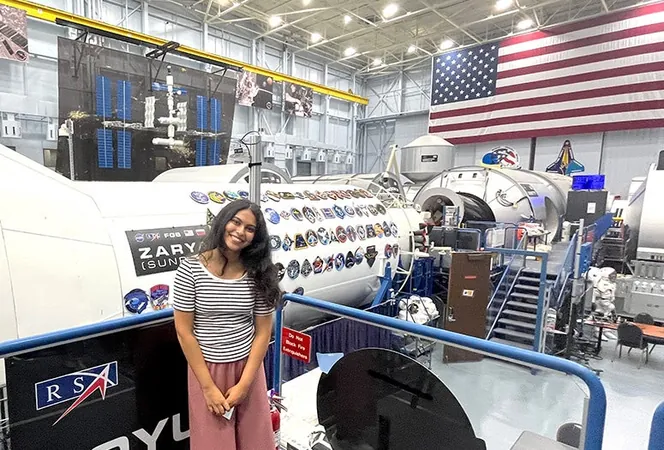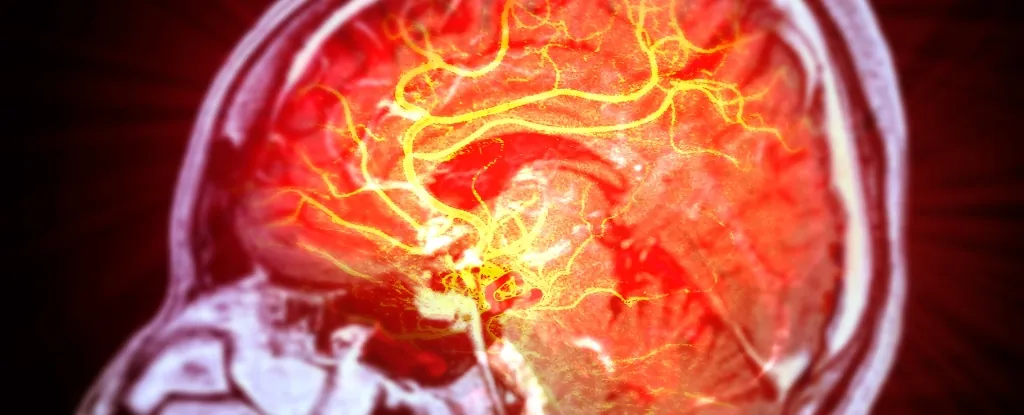
College Student Equips NASA with Vital Microbial Monitoring Tool
2025-09-22
Author: Liam
Undergraduate Makes Strides in Space Microbiology
As astronauts soar into the cosmos, they're not alone; they're joined by a host of tiny, unseen microorganisms that can infiltrate spacecraft. With the rise of new space ventures, monitoring these microbial invaders isn't just smart—it's essential for astronaut health and spacecraft integrity. This summer, a bright undergraduate from Rice University played a crucial role in developing a custom tool for NASA to keep tabs on these microbes.
Meet Ankhi Banerjee: The Clever Mind Behind the Project
Ankhi Banerjee, a junior at Rice University majoring in computer science and biology, dedicated 10 weeks over the summer to create a data-analysis pipeline that helps NASA's Johnson Space Center scientists monitor microbes aboard the International Space Station (ISS). Her project blossomed through the Genome Sleuths initiative, designed by computer scientist Todd Treangen, which invites undergraduates to create computational tools for studying microbial genomes.
Unearthing Patterns in Space Microbial Life
Working closely with Sarah Wallace from the microbiology lab at NASA, Banerjee sought to interpret sequencing data from microbiome samples taken on the ISS. Throughout her summer stint, she crafted visualizations revealing where different bacteria thrived across various sections of the station. She even began developing a tool to detect unusual microbial patterns.
"I had a blast uncovering these patterns! It’s fascinating to see how sweat-loving bacteria cluster around gym equipment, while food-related microbes hover near dining areas and bathroom handrails become microbial hotspots," Banerjee shared, showcasing her excitement.
A Show-Stopping Presentation at NASA
At the conclusion of her summer project, Banerjee presented her findings at the Johnson Space Center, unexpectedly facing a larger audience than anticipated. "I thought I'd be speaking to a small familiar crowd, but there were about 30 people there! It was intimidating, but everyone was welcoming and eager to support my learning journey," she recounted.
A Program with Proven Impact
Genome Sleuths has become a hallmark of Rice University undergraduates' research opportunities since its inception in 2018. Treangen has guided numerous students, with many co-authoring research papers or contributing to open-source tools. He praised Banerjee's work as one of the standout projects in the program's eight-year history.
What Lies Ahead for the Anomaly-Detection Tool
Banerjee's anomaly-detection tool is still evolving, with aspirations to create a polished software that will enhance monitoring on the ISS and future missions, including NASA's Artemis program aimed at lunar exploration.
A Future in Science?
Reflecting on her experience, Banerjee expressed a desire to continue her research journey. "I’m considering pursuing a Ph.D. in computational biology," she shared, hinting at a promising future in scientific research.
Endless Opportunities for Curious Minds
Wallace expressed excitement about the collaboration, noting Banerjee's enthusiasm and intellect. She sees the potential of Banerjee's tool as a significant enhancement for crew health. In addition to Banerjee, students from any major can engage with similar research projects at Rice, gaining credits while tackling real-world challenges.
With such innovative projects, it's clear that the future of space microbiology—and beyond—looks incredibly bright!









 Brasil (PT)
Brasil (PT)
 Canada (EN)
Canada (EN)
 Chile (ES)
Chile (ES)
 Česko (CS)
Česko (CS)
 대한민국 (KO)
대한민국 (KO)
 España (ES)
España (ES)
 France (FR)
France (FR)
 Hong Kong (EN)
Hong Kong (EN)
 Italia (IT)
Italia (IT)
 日本 (JA)
日本 (JA)
 Magyarország (HU)
Magyarország (HU)
 Norge (NO)
Norge (NO)
 Polska (PL)
Polska (PL)
 Schweiz (DE)
Schweiz (DE)
 Singapore (EN)
Singapore (EN)
 Sverige (SV)
Sverige (SV)
 Suomi (FI)
Suomi (FI)
 Türkiye (TR)
Türkiye (TR)
 الإمارات العربية المتحدة (AR)
الإمارات العربية المتحدة (AR)